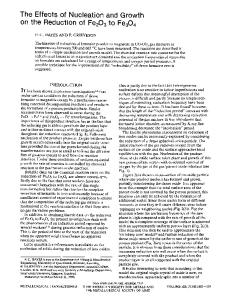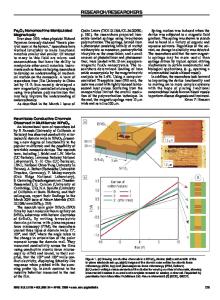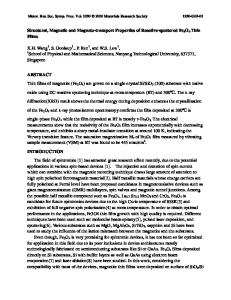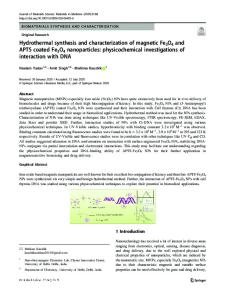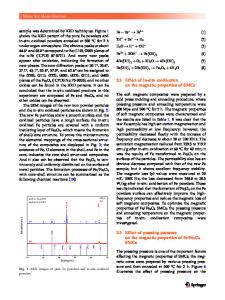High-Quality, Smooth Fe 3 O 4 Thin Films on Si By Controlled Oxidation of Fe in CO/CO 2
- PDF / 700,650 Bytes
- 6 Pages / 432 x 648 pts Page_size
- 58 Downloads / 348 Views
High-Quality, Smooth Fe3O4 Thin Films on Si By Controlled Oxidation of Fe in CO/CO2 Fengyuan Shi1, Hua Xiang1, M. S. Rzchowski2, Y. A. Chang1 and P.M. Voyles1 Department of Materials Science and Engineering, University of Wisconsin-Madison, Madison, Wisconsin 53706, USA 2 Department of Physics, University of Wisconsin-Madison, Madison, Wisconsin 53706, USA 1
ABSTRACT We fabricated Fe3O4 thin films on TiN buffered Si by CO/CO2 oxidation at 160 °C. The easy saturation of the magnetization at high magnetic field and high resolution scanning transmission electron microscopy (HRSTEM) images show low defect density, smooth Fe3O4 thin films. Oxidation at 400 °C resulted in an undesirable second phase in between the TiN and the unoxidized Fe, but changes in total gas pressure did not lead to a second phase. The crystal structure of this second phase is similar to Fe2TiO4 (ulvöspinel) from HRSTEM and STEM electron energy loss spectroscopy. Fe3O4 thin films grown at 160 °C follow a power law growth model with an exponent of 0.23±0.03. INTRODUCTION Half metallic Fe3O4 is predicted to have -100% spin polarization (SP) at the Fermi level at room temperature1. Fe3O4 has a relatively high Curie temperature of 860 K and relatively high electronic conductivity at room temperature2, which make it promising for spintronic devices like magnetic random access memory (MRAM)3-5 and magnetic tunnel junctions (MTJs) with inverse (negative) tunneling magnetoresistance (TMR). However, most reported MTJs with Fe3O4 electrodes have not produced inverse or high TMR, which can be attributed to defects and the existence of other Fe oxide phases in the nominally Fe3O4 electrodes2, 6, 7. Fabrication of Fe3O4 thin films on MgO substrates8-12 is favorable due to the small lattice mismatch between MgO (0.4212 nm) and Fe3O4 (0.8398nm). However, high densities of antiphase boundaries (APBs) have been found in Fe3O4 on MgO. APBs in Fe3O4 are antiferromagnetically coupled, so they cause non-saturation of the magnetization even at high magnetic field and superparamagnetic behavior8, 9, 13-15. Inter-diffusion of Mg and Fe has also been reported at the MgO and Fe3O4 interface16. Si substrates are preferable for functional devices, but Fe3O4 cannot grow epitaxially directly on Si due to the large lattice mismatch17, so TiN, which has a similar lattice parameter to MgO, is used as a buffer on Si for the fabrication of
61
Fe3O4 thin films. Epitaxial growth and high crystal quality Fe3O4 can be obtained by, for example, reactive sputtering onto TiN buffered Si18. However, sputtered films have a strongly columnar microstructure, leading to unacceptably high surface roughness for interfacedominated devices like MTJs18, 19. Here, we present 0.34 nm rms roughness Fe3O4 thin films grown on TiN buffered Si by CO/CO2 oxidation of Fe at 160 °C. The surface roughness is comparable to Fe3O4 grown on MgO12. HRSTEM images and magnetic measurements show low defect density in the Fe3O4 thin films. We found a second phase in between un-oxidized Fe and TiN buffer after 400 °
Data Loading...

